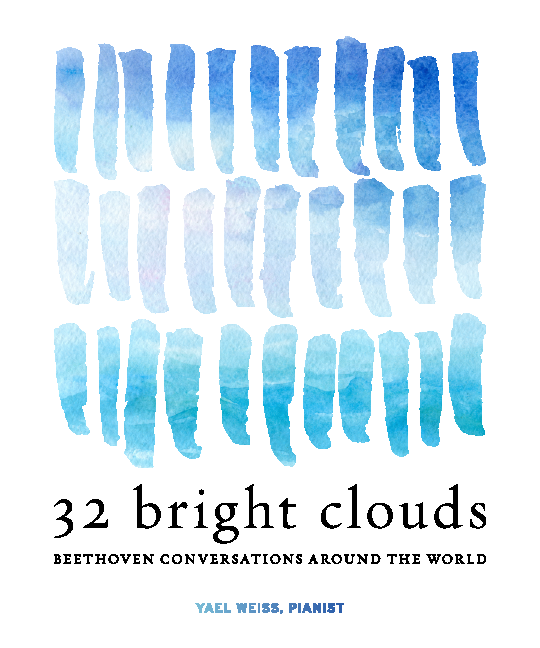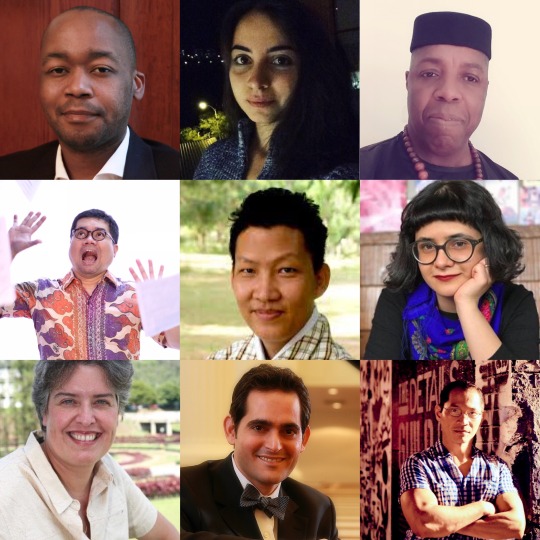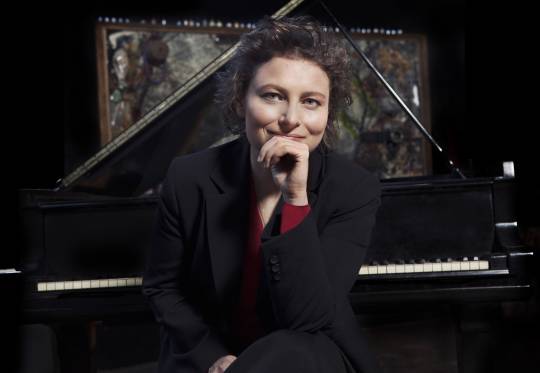Conversations | Yael Weiss’s Global Commissioning Project “32 Bright Clouds”
I’ve always been in awe of Beethoven’s ability to explore the biggest questions and uncover human commonalities through music. – Yael Weiss
Israeli-American pianist Yael Weiss sets out to “harness music’s great power for unity and peace” in her NYFA Fiscally Sponsored project “32 Bright Clouds.” An ambitious global commissioning project, Weiss connects with artists across the world from nations situated with unrest and conflict, and has them playfully interrogate and re-imagine Beethoven’s 32 piano sonatas.
Incorporated with personal stories and “found” sonic and historical materials from their own cultures, these newly-created works are by 32 composers from 32 countries including Ghana, Syria, Venezuela, and the Philippines. Each commissioned piece becomes interwoven through an inclusion of what Weiss calls the “peace motif” from Beethoven’s Missa Solemnis. The “peace motif,” a slew of melodious notes that Beethoven inscribed as “a call for inward and outward peace,” serves as an emblem of the project’s ambition.
Read on to learn more about Weiss’s “32 Bright Clouds” and her belief in the power of Beethoven and music’s mysterious ability to bring people together.
On June 11, 2019, Weiss will present a set of the commissioned works at Sala Ignacio Cervantes in Havana, Cuba. Read more about the composers and follow updates on “32 Bright Clouds” here.
NYFA: Connecting composers from around the world is such a unique opportunity and is the essence of “32 Bright Clouds.” Why do you think forging connections with other creators on a global scale is so essential?
Yael Weiss: Most of what is destructive in today’s world arises out of feelings of fear and suspicion. By forging creative connections across cultures, we can transform that fear of “otherness” into a joy of discovery and an understanding of the essential qualities that unite all peoples. This connectivity can manifest itself through many creative media, but I feel that music is ideal: music communicates directly to all of us and without words, nurturing the seeds of openness and acceptance inside us.
NYFA: Beethoven’s inscription in his score for the final section of the Missa Solemnis is “a call for inward and outward peace.” What is it about his music or music in general that transmits this sense of peace or unity?
YW: Beethoven’s music, perhaps even more than that of any other composer, encompasses the fullest range of human emotions and experience; I think that is why it speaks to people around the world, and why it is relevant to us here and now. The sense of a realized peace is mostly evident in his late works (e.g. the last movement of his piano Sonatas, an “Arietta” referenced by the composer Adina Izarra from Venezuela), whereas before one can feel his striving for a peace that often eluded him.
From all accounts, Beethoven was not himself an inherently peaceful person. Isolated from society by his deafness, and without a family of his own, he experienced great suffering. Yet he never ceased working tirelessly to transform his personal struggles into works expressing his highest ideals of freedom, equality, and unity.

NYFA: Can you describe a few of the works written by the composers and the differences of approach that show up in them? How do their chosen styles correspond with the mood of the event or conflict that they choose to symbolize?
YW: I knew that I would find a very wide range of styles and stories in the composers’ works. But even so, I’ve been quite overwhelmed by the varied human situations and connections that are coming out in the music, exceeding anything I had imagined. For example, Ananda Sukarlan, from Indonesia, chose to write a work associated with Beethoven’s “Moonlight Sonata” in dedication to the imprisoned governor of Jakarta, whose Indonesian name means “moonlight.” At the same time, he incorporated gamelan music, jazz, rock, and Chinese influences as a reference to Jakarta’s role as a melting-pot of different cultures. When I gave the world premiere of this piece, Amnesty International held a major press conference in support of the release of the governor who was unjustly imprisoned.
Another example is new work from the Philippines by Sidney Marquez Boquiren, where one can actually hear that the dark piano chords are emulating the sound of gunshots, a reference to the victims of extrajudicial killings there.
NYFA: Besides incorporating the “peace motif” from Beethoven’s Missa Solemnis, are there other rules that the composers must adhere to?
YW: I think of the guidelines I give less as “rules,”which might seem confining, and more as points of connection and inspiration, things that I hope are liberating.
Beyond the “peace motif” from the Missa Solemnis, each piece draws inspiration from one of Beethoven’s 32 piano sonatas; yet the new pieces must also be independently complete works in their own right. I encourage them to use materials and styles representative of their country’s traditions. The ways they do this are often ingenious. For example, in “The Hunt for Peace,” Syrian composer Malek Jandali uses Arabic modes and a folk dance melody while maintaining the methods that Beethoven used in his piano Sonata No.18, also titled “The Hunt.”

NYFA: Next year marks Beethoven’s 250th birthday and the culmination of the 32 commissioned pieces. What are the project’s plans for next year? In the future, how will the composers’ stories and compositions be preserved?
YW: In the coming year, an ever-increasing number of performances will take me throughout the U.S. and Canada. I’m especially excited that the Smithsonian’s Freer Gallery in Washington D.C. will be hosting the first of my “Concert-Conversations” — events where several of the project’s composers are taking part in person, sharing their living stories alongside my performances.
In some respects 2020 is indeed a culmination; but, at the same time it is also just the beginning! It is when the combined energy from all these new works and composers interacting with each other and with audiences can start to spread in wider circles. This energy will broadcast the voice of Beethoven’s “call for peace,” as reinforced by these 32 composers of today. To help with that, I will be recording three CDs with the complete cycle of new works and am also hoping to connect with a filmmaker with a similar mission to tell the story of “32 Bright Clouds” — its people and countries, its struggles, and hopes.
NYFA: Why did you choose NYFA Fiscal Sponsorship?
YW: I’m thrilled to be a part of NYFA’s community of artists. My interactions with creators from many disciplines at various NYFA gatherings have been inspiring and thought-provoking. The support, knowledge, and depth of experience of NYFA’s staff has been and continues to be invaluable help as I work on the project. And, of course, being fiscally sponsored by such a highly-regarded organization is vital to the work of funding this multi-faceted and ongoing project.
– Interview conducted by Priscilla Son, Program Officer, Fiscal Sponsorship & Finance
Are you an artist or a new organization interested in expanding your fundraising capacity through NYFA Fiscal Sponsorship? We accept out-of-cycle reviews year-round. No-fee applications are accepted on a quarterly basis, and our next deadline is June 30. Click here to learn more about the program and to apply. Sign up for our free bi-weekly newsletter, NYFA News, for the latest updates and news about Sponsored Projects and Emerging Organizations.
Images: Yael Weiss, Image Credit: Lisa-Marie Mazzucco; video, “32 Bright Clouds” image, and montage of “32 Bright Clouds” composers Bongani Ndodana-Breen (South Africa), Aslihan Kecebasoglu (Turkey), George Mensah Essilfie (Ghana), Ananda Sukarlan (Indonesia), Kheng Sonam Dorji (Bhutan), Aida Shirazi (Iran), Adina Izarra (Venezuala), Malek Jandali (Syria), Sidney Marquez Boquiren (Philippines), Courtesy: Yael Weiss.





